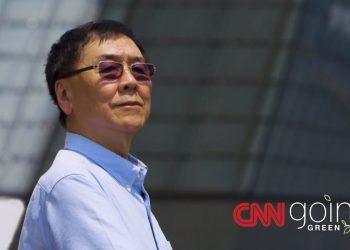On March 4, Hanwha Q CELLS filed a patent infringement complaint with the U.S. International Trade Commission (ITC) against JinkoSolar, LONGi Solar, and REC Group. The company also filed related patent infringement complaints with the U.S. District Court for the District of Delaware against the same companies. In Germany, Hanwha Q CELLS filed patent infringement complaints with the Regional Court of Düsseldorf against JinkoSolar and REC Group.
The ITC complaint alleges that the three solar manufacturers are importing and selling solar cells and modules that infringe Hanwha Q CELLS’s patented passivation technology. Hanwha says that the companies have unlawfully incorporated this technology into the solar cells that they are using in their modules.
Of the three, Jinko is manufacturing modules in the U.S., however, it is using imported cells, which, should Hanwha prevail in its complaint, border agents would no longer accept. For LONGi and REC Group shipments containing modules with this technology would not be accepted into the United States should the ITC find that the complaint is valid.
The list of modules that Hanwha Q Cells has identified as being problematic can be found on in the individual filings for each manufacturer, which you can view at this link.
According to a press release, Hanwha Q CELLS began manufacturing Q.ANTUM solar cells using this passivation technology in 2012 and has produced more than 2.5 billion such cells globally.
The company has built a 1.7 GW manufacturing facility in Dalton Georgia, which it opened this month, where it will assemble panels using cells with this technology. The company said the passivation technology at issue is critical to its future plans and that it believes it is these cells that set it apart from competitors.
Covington laywer Sturge Sobin, who filed the ITC claim as Hanwha Q CELLS representative, said in an interview that his client feels very strongly that “they have invested in the R&D and the building of a major manufacturing plant in Georgia. They feel very strongly that it’s important to uphold their IP rights.”
Could this hurt the solar industry?
According to Sobin, when you file a claim with the ITC, you must also assess the impact to the marketplace:
“It’s our view that there are an adequate number of suppliers in the marketplace who are not the named manufacturers here and on the basis of other information, the existence of excess capacity, we believe there would not be any significant adverse impact in the marketplace,” he said.
Potential outcomes of the case
The ITC has 30 days to review the material submitted and determine if the claim is complete. Sobin said that the commission is “really just making sure we checked the boxes of what we had to do, which is why the ITC filing is really a big filing because a lot of information is required,” he said.
Assuming the ITC decides the claim is complete, it then has about 16 months to evaluate it and determine a remedy if necessary. The remedy could include an “exclusion order” in which customs officials would receive a list of products that are no longer allowed in the country.
Another potential remedy, a cease and desist order, could impact existing product already imported into the marketplace.
Sobin said he wasn’t in the position to state the company’s plan is but that in general, licensing the technology and paying royalties to the patent owner is “a standard way to be authorized, to be legal,” said, adding “and so is not using the technology.”
If JinkoSolar, LONGi and REC Group did it, why and how?
It’s beyond the scope of a patent infringement case to ask why or how patent-infringed technology ended up being used illegally by another party, explained Sobin.
“In the patent world we don’t ask why” said Sobin, adding “the law doesn’t care why.”
He said the only thing that matters is “if you are using someone else’s patented invention, are you doing it with their authorization or not?”
LONGi solar issued a statement in response to the news explaining that the patent family used by Hanwha QCELLS’ in the complaint has been “acquired through multiple transfers and transactions from other research institutes,” and added that “there is considerable uncertainty with regards to the validity of the patent rights.”
LONGi also said that “the current technology used in LONGi’s products is not the same as the technology contained in the disputed patents: the disputed patents are about ALD technology while LONGi uses PECVD technology.”
Can the industry weigh in?
At this point the only people who can weigh in on the case are the parties involved in it, said Sobin. However, at the conclusion of the case there will be opportunities for almost any interested party to address the issue as it relates to the public interest.
“That will come more than a year from now,” he said.




![[ ECO 2018/12/25 ] – 【 J1NU 】](http://www.ecobuild.club/wp-content/uploads/2019/03/1552025364_maxresdefault-75x75.jpg)
